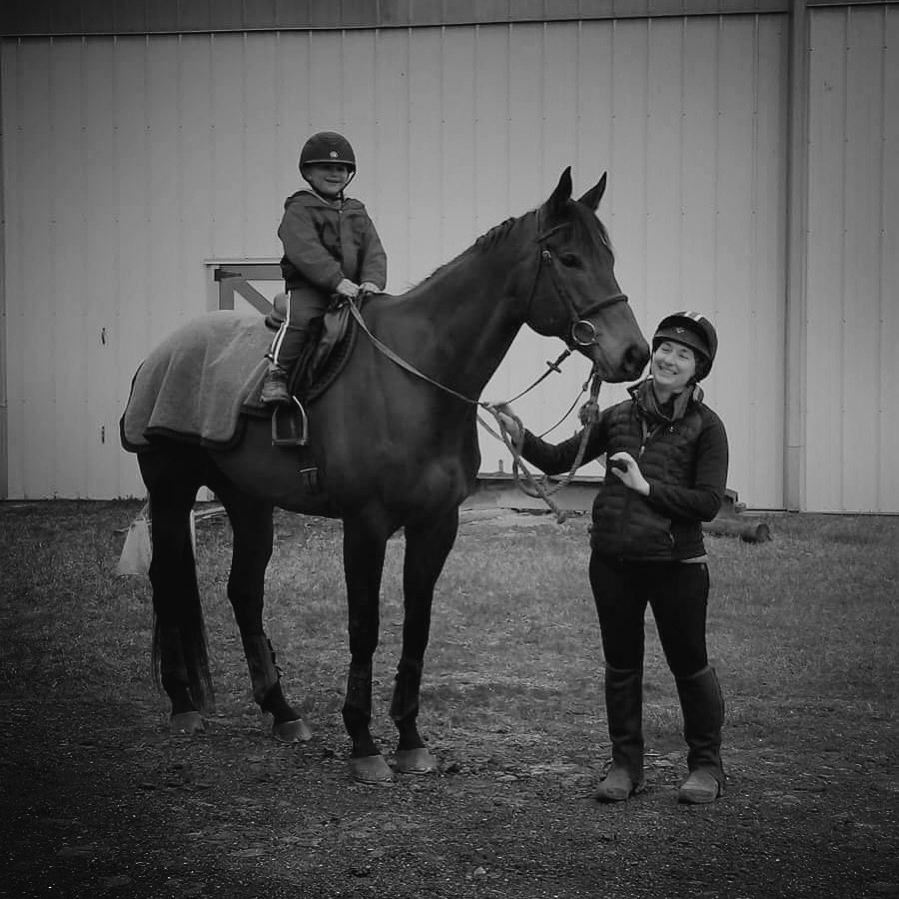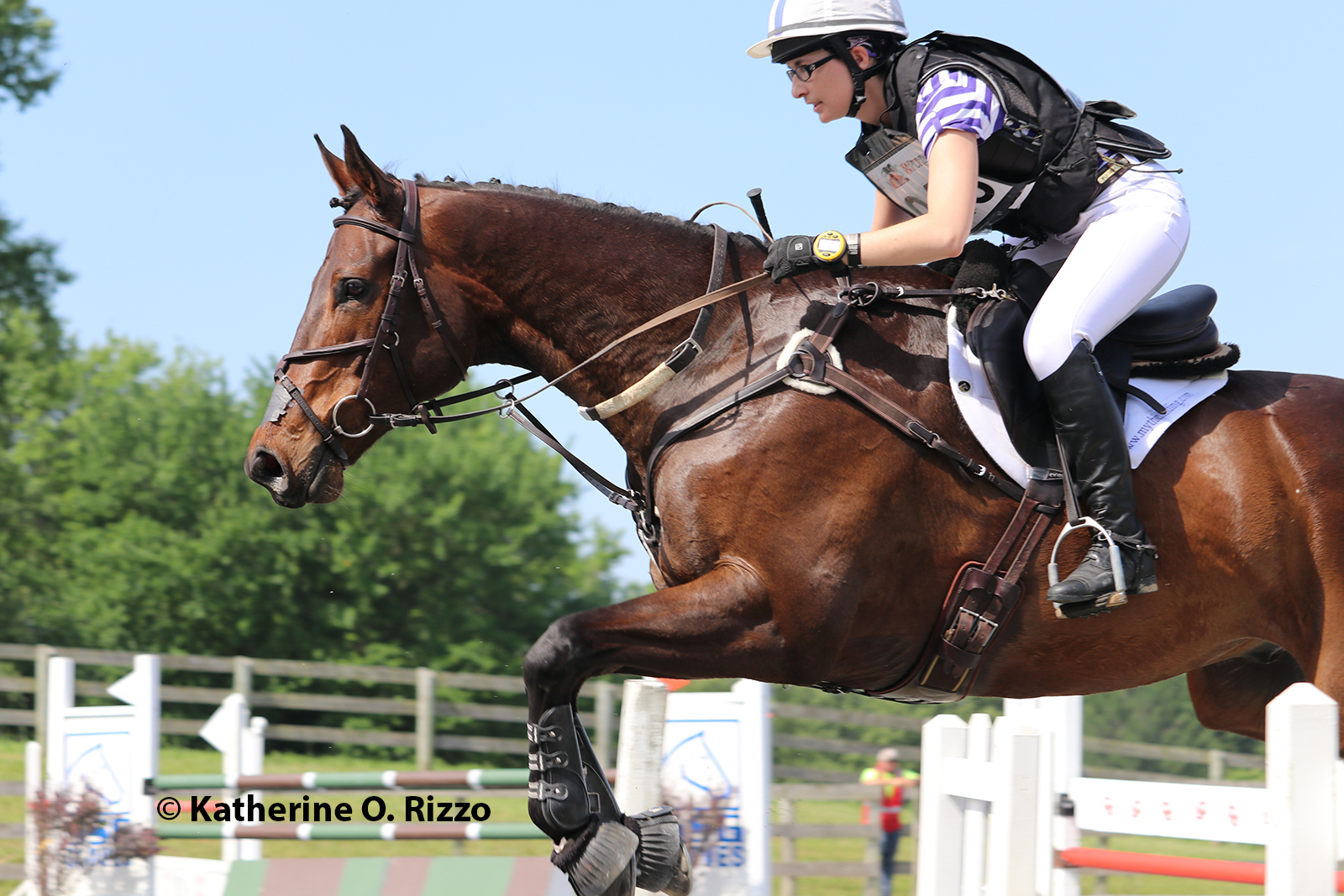At first glance, 12-year-old Runsonstilts (aka “Stilts”) might appear to be just a plain, brown off-the-track Thoroughbred with a sweet expression. But to his owner, Margaret McKelvy of Mount Airy, Maryland, he’s the perfect amateur horse, as eager to venture out on the trail as he is to go jumping or “dance in the sandbox.” As she remarked, “He goes as well as I ride him and will always rise to the occasion”—high praise indeed for any equine.

Stilts has also developed into a nice event horse, carrying the marketing/business professional to Preliminary-level competition after years of careful training.
Until, that is, a kick injury revealed an unexpected knee issue.
“After we moved up to Preliminary when he was 7, we had a few instances of general unsoundness that we couldn’t pinpoint,” McKelvy recalled. “I took him for a bone scan, and it mostly pointed to his front feet; so, we got that straightened out and went on our way.” Trouble with drop fences into water then ensued. But since McKelvy and her veterinarian had done so many lameness diagnostics “… and fixed what we could find,” they treated it as a training issue and Stilts returned to the Preliminary level, she said.
Still, McKelvy had a nagging feeling they’d missed something. “He has an almost perfect cross-country record, but I know him so well that I knew something wasn’t quite right,” she explained. “Then he got kicked in his left knee during turnout when he was 9. It was bad enough to warrant X-rays, and it was then that we discovered the arthritis. Then, looking back, a lot of things made sense.” she said.
Stilts’ initial prognosis was guarded, with McKelvy’s vet recommending that her beloved gelding be retired from Preliminary-level competition. “This was obviously very upsetting to me as I was planning on doing a two-star [then still a one-star] and move up to Intermediate, so I took him to a performance horse specialist for a second opinion,” she recalled. The specialist agreed with her vet but gave McKelvy some ideas about how to reach her two-star goal.
However, after a lot of soul-searching, “I decided that I would rather have a sounder horse for longer than potentially ‘ruin’ him in my quest for a two-star,” she reflected. “So, my home vet consulted with a colleague at Marion duPont Scott Equine Medical Center [in Leesburg, Virginia]. They created a plan to do a series of IRAP [Interleukin-I Receptor Antagonist Protein therapy] and an adjustment to his workload—or rather, work type.”
Managing Stilts’ arthritic knee has been a “rather expensive” but worthwhile journey involving a combination of treatments and a switch to more knee-friendly activities.

“Oh gosh, we’ve done SO much for Stilts, and I genuinely don’t regret any of it,” McKelvy commented. “At first, we did a series of two IRAP treatments a few weeks apart followed by Osphos [a bisphosphonate that aids the bone-remodeling process], and that got him going and sound again. I backed off his workload a lot in those first few months and ceased any sort of conditioning work. I also added in bi-annual Adequan® series for him, which are typically in March and September. Then I purchased Horseware IceVibe boots for his knees, and he gets his legs iced from the knee down after any jump school. I also put Surpass® [a topical NSAID] on his knees after hard workouts.
“While we’re not competing at Preliminary anymore, we can still compete at Novice and Training in eventing, and I’ve turned my focus a bit to dressage since his initial diagnosis,” she continued. To that end, she said, “We’ve competed through Second Level and have hopes to move up to Third Level and get our [U.S. Dressage Federation] Bronze Medal.”
It’s been about three years since Stilts’ arthritis was discovered. McKelvy has monitored his progress since then with periodic X-rays and “hands-on” vet checks to stay ahead of any potential problems. “After the first progress report showed more progression of the arthritis than we were hoping for, we started a series of IRAP every other month for about 18 months,” she noted. “His latest progress-report X-rays just last month showed that the progression had slowed down a bit, so we’re backing off the IRAP at the moment. It’s been a long road, but I’m pretty confident in his management at the moment.”
If there is any big takeaway from her experience, McKelvy said, it’s “… to have a vet that you can freely communicate with and someone that understands your goals. While it was hard for me to accept that Stilts wasn’t going to be a two-star horse, my vet helped me figure out what Stilts can do and has helped keep him sound and going.
“I think it’s also important to point out that Stilts isn’t on any sort of anti-inflammatories at the moment to maintain his soundness,” she added. “I find that comforting for some reason. And I also know that I still have tools at my disposal for the future.
“Also, I would tell people not to discount the little things like icing. It doesn’t take that much time and can make a difference,” McKelvy pointed out. “While on paper it seems like Stilts’ knee is a lot to maintain, it’s just part of our routine now.
“And if you have a horse like Stilts, you’d do anything to be able to keep riding him!”
This sidebar from What to Know About Knees originally appeared in the Spring 2022 issue of Practical Horseman.









